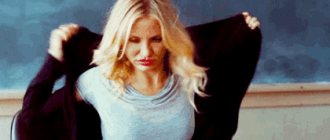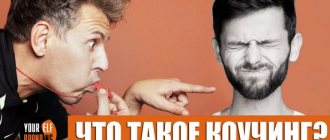Speech therapy exercises for erased dysarthria
Office of psychological and pedagogical correction of Lebyazhinsky district
Design of materials for information stands:
Speech therapy exercises for erased dysarthria.
Prepared by speech therapist teacher: Mukhambetova F.B.
Akku village 2021, December
According to research by R.I. Martynova, children with a mild form of dysarthria lag behind in physical development significantly more than children with functional dyslalia. In children with an erased form of dysarthria in the speech system, neurological symptoms were identified: erased paresis, hyperkinesis, disorders of muscle tone in the articulatory and facial muscles. Neuropsychiatric disorders were significantly more detected in mild forms of dysarthria than in functional dyslalia. That. The work of a speech therapist with children with an erased form of dysarthria should not be limited to the production and correction of defective sounds, but should have a wider range of correction of the child’s speech as a whole.
The peculiarities of the content of speech therapy work with an erased form of dysarthria are reflected in the specifics of planning correctional work: an additional preparatory stage is introduced, which is necessary to normalize motor skills and the tone of the articulatory apparatus, and the development of prosody.
Having studied the methods of L.V. Lopatina, N.V. Serebryakova, L.A. Danilova, I.I. Ermakova, E.M. Mastyukova, E.F. Arkhipova, I selected and systematized practical material for all sections of the preparatory stage, taking into account the speech and non-speech symptoms of dysarthria.
1) Normalization of muscle tone of the articulatory apparatus - differentiated speech therapy massage (method by E.F. Arkhipova)
For children with hypertonicity and hyperkinesis, a relaxing massage is recommended. In such children, the face is frozen, the muscles are stiff, the muscles of the lips are stretched and pressed against the gums, the tongue is thick and shapeless, the tip of the tongue is not pronounced. Massage techniques: patting, tapping, light vibration, stroking for no more than 1.5 minutes. All movements go from the periphery to the center: from the temples to the center of the forehead, nose, middle of the lips.
For children with hypotension - a strengthening massage. In such children, the facial muscles are flabby and loose, the mouth is open, the lips are flaccid, the thin tongue lies at the bottom of the mouth. Techniques: deep rubbing, kneading, stroking with force for up to 3 minutes. All movements are from the center of the face to the sides: from the forehead to the temples, from the nose to the ears, from the middle of the lips to the corners, from the middle of the tongue to the tip.
2) Normalization of motor skills of the articulatory apparatus:
exercises for masticatory muscles (met. I.I. Ermakova)
- Open your mouth and close it.
- Move the lower jaw forward.
- Open your mouth and close it.
- Puff out your cheeks and relax.
- Open your mouth and close it.
- Lateral movements of the lower jaw.
- Open your mouth and close it.
- Pull your cheeks in and relax.
- Open your mouth and close it.
- Bite your upper lip with your lower teeth
- Open your mouth with your head thrown back, close your mouth with your head straight.
gymnastics for voluntary tension and movement of lips and cheeks (met. E.F. Arkhipova)
- Inflating both cheeks at the same time.
- Puffing out the cheeks alternately.
- Retraction of the cheeks into the oral cavity.
- The closed lips are pulled forward with a tube (proboscis) and then returned to their normal position.
- Grin: the lips are stretched to the sides, pressed tightly against the gums, both rows of teeth are exposed.
- Alternating grin-proboscis (smile-pipe).
- Retraction of the lips into the oral cavity with the jaws open.
- Lifting only the upper lip, exposing only the upper teeth.
- Retraction of the lower lip, exposing only the lower teeth.
- Alternately raising and lowering the upper and lower lips.
- Imitation of rinsing teeth.
- Lower lip under upper teeth.
- Upper lip under lower teeth.
- Alternating the two previous exercises.
- Lip vibration (horse snorting).
- As you exhale, hold the pencil with your lips.
passive gymnastics for the muscles of the tongue - creating positive kinesthesia in the muscles (met. O.V. Pravdina)
Passive gymnastics is a form of gymnastics when a child makes movements only with the help of mechanical action - under the pressure of an adult's hand. . Passive movement should be carried out in 3 stages: 1 - entering the position (pucker your lips), 2 - maintain the position, 3 - exiting the position. After several repetitions, an attempt is made to perform the same movement one or two more times without mechanical assistance, i.e. passive movement is translated first into passive-active, and then into voluntary, performed according to verbal instructions.
An approximate complex of passive gymnastics:
- The lips close passively and are held in this position. The child's attention is fixed on closed lips, then he is asked to blow through his lips, breaking their contact;
- Using the index finger of the left hand, lift the child’s upper lip, exposing the upper teeth; with the index finger of the right hand, raise the lower lip to the level of the upper incisors and ask the child to blow;
- The tongue is placed and held between the teeth;
- The tip of the tongue is pressed and held against the alveolar process, the child is asked to blow, breaking the contact;
- The child's head is thrown back somewhat, the back of the tongue is raised towards the hard palate, the child is asked to make coughing movements, fixing his attention on the sensations of the tongue and palate.
active articulatory gymnastics - improving the quality, accuracy, rhythm and duration of articulatory movements; An important section of articulatory gymnastics for dysarthrics is the development of more subtle and differentiated movements of the tongue, activation of its tip, delimitation of movements of the tongue and lower jaw.
An approximate set of static articulation exercises for dysarthrics. L.V. Lopatina, N.V. Serebryakova
- Open your mouth, hold it open while counting from 1 to 5-7, close it.
- Open your mouth slightly, push your lower jaw forward, hold it in this position for 5-7 seconds, return to its original position.
- Pull the lower lip down, hold it while counting from 1 to 5-7, return to its original state; - raise your upper lip, hold it while counting from 1 to 5-7, return to its original state.
- - stretch your lips into a smile, exposing the upper and lower incisors, hold the count from 1 to 5-7, return to their original state; - stretch only the right (left) corner in a smile, exposing the upper and lower incisors, hold it counting from 1 to 5-7, return to its original position.
- - raise the right one, then the left one in turn: the corner of the lip, while keeping the lips closed, hold the count from 1 to 5-7, return to its original state.
- - stick out the tip of your tongue, mash it with your lips, pronouncing the syllables pa-pa-pa-pa. After pronouncing the last syllable, he will leave his mouth slightly open, fixing his wide tongue and holding it in this position, counting from 1 to 5-7; - stick the tip of your tongue between your teeth, bite it with your teeth, pronouncing the syllables ta-ta-ta-ta. After pronouncing the last syllable, leave the mouth slightly open, fixing the wide tongue and holding it in this position, counting from 1 to 5-7, return to its original position.
- - place the tip of the tongue on the upper lip, fix this position and hold it counting from 1 to 5-7, return to its original state; - place the tip of the tongue under the upper lip, fix it in this position, hold it while counting from 1 to 5-7, return it to its original state; - press the tip of the tongue to the upper incisors, hold the given position counting from 1 to 5-7, return to its original state; - the movement of “licking” with the tip of the tongue from the upper lip into the oral cavity behind the upper incisors.
- – give the tip of the tongue a “bridge” (“slide”) position: press the tip of the tongue against the lower incisors, raise the middle part of the back of the tongue, press the lateral edges to the upper lateral teeth, hold the specified position of the tongue counting from 1 to 5-7, lower the tongue .
An approximate set of dynamic articulation exercises for dysarthrics. L.V. Lopatina, N.V. Serebryakova
- Stretch your lips into a smile, exposing the upper and lower incisors; Pull your lips forward like a tube.
- Stretch your lips into a smile with your incisors bared, and then stick out your tongue.
- Stretch your lips into a smile with your incisors bared, stick out your tongue, press it with your teeth.
- Raise the tip of your tongue onto your upper lip and lower it onto your lower lip (repeat this movement several times).
- Place the tip of your tongue under the upper lip, then under the lower lip (repeat this movement several times)
- Press the tip of your tongue behind the upper, then lower incisors (repeat this movement several times).
- Alternately make the tongue wide, then narrow.
- Lift your tongue up, place it between your teeth, and pull it back.
- Build a “bridge” (the tip of the tongue is pressed against the lower incisors, the front part of the back of the tongue is lowered, the front part is raised, forming a gap with the hard palate, the back part is lowered, the lateral edges of the tongue are raised and pressed against the upper lateral teeth), break it, then build it again and again break, etc.
- Alternately touch the protruding tip of your tongue to the right, then to the left corner of your lips.
- Raise the tip of your tongue to the upper lip, lower it to the lower lip, alternately touch the protruding tip of the tongue to the right, then to the left corner of the lips (repeat this movement several times).
3) Development of fine motor skills of the hands:
- massage and self-massage of fingers and hands;
- games with small objects: stringing beads, mosaics, small construction sets;
- finger gymnastics complexes;
- developing self-service skills: buttoning and unbuttoning buttons, tying shoes, using a fork and knife;
- classes with plasticine and scissors;
- preparing your hand for writing: coloring and shading pictures, tracing stencils, graphic dictations, working with copybooks;
A set of exercises for self-massage of hands and fingers.
1. Children use the pads of four fingers, which are placed at the base of the fingers on the back of the hand being massaged, and dotted movements back and forth, shifting the skin by about 1 cm, gradually moving them towards the wrist joint (“dotted” movement).
Iron
We'll smooth out the wrinkles with an iron, everything will be fine. Let's iron all the pants of the hare, hedgehog and bear.
2. Using the edge of their palm, children imitate “sawing” in all directions on the back of the hand (“straightforward” movement). The hand and forearm are placed on the table, the children are sitting.
Saw
Drank, drank, drank, drank! Cold winter has come. Let's get some wood for us quickly, let's light the stove and warm everyone up!
3. Rotational movements are made with the base of the hand towards the little finger.
Dough
We knead the dough, we knead the dough, We will bake pies with cabbage and mushrooms. — Should I treat you to some pies?
4. Self-massage of the hand from the palm side. The hand and forearm are placed on the table or on the knee, the children are sitting. Stroking.
Mother
Mom strokes her little son on the head, Her palm is so tender, Like a willow twig. - Grow up, dear son, Be kind, brave, honest, Gain intelligence and strength. And don't forget me!
5. Move the knuckles of your fingers clenched into a fist up and down and from right to left along the palm of the hand being massaged (“straight-line movement”).
Grater
Together we help mom, grate beets with a grater, together with mom we cook cabbage soup, - Look for something tastier!
6. The phalanges of the fingers clenched into a fist make a movement according to the “gimlet” principle in the palm of the massaged hand.
Drill
Dad takes the drill in his hands, And it buzzes, sings, As if a fidgety mouse is gnawing a hole in the wall!
7. Self-massage of fingers. The hand and forearm of the arm being massaged are located on the table, the children are sitting. With “pincers” formed by the bent index and middle fingers, a grasping movement is made for each word of the poetic text in the direction from the nail phalanges to the base of the fingers (“rectilinear” movement).
Ticks
The pliers grabbed the nail and tried to pull it out. Maybe something will work out if they try!
8. The pad of the thumb, placed on the back side of the massaged phalanx, moves, the other four cover and support the finger from below (“spiral” movement).
Lambs
“Byashki”, curly-haired lambs, graze in the meadows. All day long it’s all: “Be and be,” They wear fur coats on themselves. Fur coats in curls, look, “Byashki” slept in curlers, In the morning they took off the curlers, Try to find a smooth one. Everyone is curly-haired, every single one, They run in a curly-haired crowd. This is their fashion, the sheep people.
9. Movements as when rubbing frozen hands.
Morozko
Morozko froze us, crawled under a warm collar, like a thief, carefully penetrated into our felt boots. He has his own worries - Know the frost, but get stronger! Don’t spoil, Frost, why don’t you treat people like that?!
4) Development of general motor skills and motor coordination:
- pantomime (book “Tell Poems with Your Hands”, “Psychogymnastics” by M.I. Chistyakov, “Movement and Speech” by I.S. Lopukhin);
- outdoor games for coordination and coordination of movements;
- special complexes of physical and rhythmic exercises (journal “Defectology” No. 4, 1999)
5) Normalization of voice and speech breathing:
— Breathing exercises by A.N. Strelnikova.
— Exercises for the development of speech breathing
The following exercises are recommended in speech therapy practice:
- Choose a comfortable position (lying, sitting, standing), place one hand on your stomach, the other on the side of your lower chest. Take a deep breath through your nose (this pushes your stomach forward and expands your lower chest, which is controlled by both hands). After inhaling, immediately exhale freely and smoothly (the abdomen and lower chest return to their previous position).
— Take a short, calm breath in through your nose, hold the air in your lungs for 2-3 seconds, then exhale long, smoothly through your mouth.
— Take a short breath with your mouth open and, with a smooth, drawn-out exhalation, pronounce one of the vowel sounds (a, o, u, i, e, s).
- Smoothly pronounce several sounds on one exhalation: aaaaa aaaaaooooooo aaaaaauuuuuu
- Count on one exhalation up to 3-5 (one, two, three...), trying to gradually increase the count to 10-15. Make sure you exhale smoothly. Count down (ten, nine, eight...).
- Read proverbs, sayings, tongue twisters in one breath. Be sure to follow the instructions given in the first exercise.
Practiced skills can and should be consolidated and fully applied in practice.
The tasks become more complex gradually: first, long speech exhalation training is carried out on individual sounds, then on words, then on a short phrase, when reading poetry, etc.
In each exercise, children’s attention is directed to a calm, relaxed exhalation, to the duration and volume of the sounds pronounced.
“Skits without words” help normalize speech breathing and improve articulation in the initial period. At this time, the speech therapist shows the children an example of calm expressive speech, so at first he speaks more during classes. “Skits without words” contain elements of pantomime, and speech material is specially kept to a minimum in order to provide the basics of speech technique and eliminate incorrect speech. During these “performances” only interjections are used (Ah! Ah! Oh! etc.), onomatopoeia, individual words (names of people, names of animals), and later short sentences. Gradually, the speech material becomes more complex: short or long (but rhythmic) phrases appear as speech begins to improve. The attention of beginning artists is constantly drawn to what intonation should be used to pronounce the corresponding words, interjections, what gestures and facial expressions to use. During the work, children’s own imaginations are encouraged, their ability to choose new gestures, intonation, etc.
Also, for the development of proper speech breathing, the following are recommended:
- special exercise games: playing pipes, blowing away small objects, blowing soap bubbles, etc.
- phonetic rhythm by Mukhina A.Ya.;
- voice exercises by Ermakova I.I., Lopatina L.V.
6) Formation of the prosodic side of speech according to met. Lopatina L.V.:
- exercises to develop rhythm (perception and reproduction of rhythm);
- exercises to master the rhythm of words;
- familiarity with narrative, interrogative, exclamatory intonation;
- formation of intonation expressiveness in expressive speech
7) Overcoming sensory impairments:
- development of spatio-temporal concepts in met. Danilova L.A.
- exercises to develop the sense of touch in met. Danilova L.A.
System of classes for preschool children (from 5 to 7 years old)
Development of spatial concepts.
- Determination of basic spatial (prepositional) relations on specific objects. The child, according to the instructions, rearranges the objects in the indicated directions.
- The name of the main spatial relationships in the plot picture.
- Development of constructive praxis.
- Development of spatial relationships in a child’s visual activity.
- Memory training for spatial relationships. Analysis of a picture from memory, taking into account the spatial relationships between objects. A story from memory about the location of objects in space... Training of trace tests of constructive praxis.
Office for the Development of Touch.
- Training to determine the texture of an object. Recognition of texture by touch during preliminary display.
- Determination of the texture and shape of real objects without prior demonstration.
- Differentiation by touch of different geometric bodies: a) the same shape, but different thicknesses (flat and volumetric); b) the same shape and thickness, but different sizes (large and small); c) the same size and thickness, but different shapes... The development of this ability is formed in stages:
- Stage I - recognition of three-dimensional figures by touch after preliminary visual familiarization with the figure;
- // stage - recognition of three-dimensional figures of the same texture without preliminary display;
- Stage III - recognition of flat figures of the same texture after visual familiarization;
- Stage IV - recognition of flat figures by touch without display;
- Stage V - recognition of figures by touch of the same shape, but different in texture after their preliminary examination;
- Stage VI - recognition of the shape and texture of an object by touch without prior inspection;
- Stage VII - distinguishing objects of the same shape and texture by size by touch...
 Development of temporal representations.
Development of temporal representations.
- Determination of the sequence of seasons, clarification in pictures and in verbal descriptions of the distinctive features of each season.
- Sequence of periods of the day, analysis of regime moments.
- Practicing the concepts of “older - younger”.
To form generalizations, exercises are carried out to develop generalizations by the method of elimination (the game “The Fourth Extra”).
- / stage - 4 objects are laid out in front of the child, united by certain properties.
- // stage - eliminating unnecessary objects in the picture.
To develop an understanding of cause-and-effect relationships
a guessing game is used... During the game, independent observations and certain concepts about objects are formed, cause-and-effect relationships are revealed.
As many years of observations have shown, the proposed correction methods can significantly develop unformed functions and prepare the child to perceive
9) Development of phonemic hearing according to met. T.A. Tkachenko, L.V. Lopatina, N.V. Serebryakova
Speech therapy work for erased forms of dysarthria at the preparatory stage ensures the effectiveness of correction at all subsequent stages of correctional work.
Normalization and development of voice with dysarthria
One of the areas of correctional work is the normalization and development of the child’s voice. To this end, a series of exercises are carried out that are aimed at causing a stronger voice and at modulating the voice in pitch and strength. Interesting exercises can be borrowed from the works of Ermakova I.I., Lopatina L.V., L.I. Belyakova and others.
Work on the voice always begins with the development of speech breathing , since without a strong air stream it is impossible to achieve normal vibration of the vocal folds.
The development of breathing can begin with training the ability to draw in as much air as possible (as if inflating the tummy) and training a smooth long exhalation. The exercise is performed first in a lying position, and then sitting and standing. The child is placed on his back, a light soft toy lies on his tummy, and he is asked to inflate his tummy “like a balloon,” and then “deflate the balloon,” while the toy rises and falls. When a child learns to “rock a toy on his tummy,” the child is taught to “inflate and deflate his tummy” while sitting and standing, controlling his movements with his hand. Then the children form a long exhalation; for this purpose, you can blow on the flame of a candle or on special “fountains”.
The next stage in the development of speech breathing may be a set of exercises using the method of “paradoxical gymnastics by A. N. Strelnikova.” This gymnastics allows for the further development of the thoraco-abdominal type of breathing, the development of mobility of the diaphragmatic muscle, and an increase in the volume of inhaled air.
Particular attention is paid to the following conditions:
- the child’s active attention is attracted to the inhalation phase; train only inhalation: sharp, short, noisy. Exhalation occurs after inhalation independently (through the mouth). Do not hold your exhalation or push it out. Inhalation is very active through the nose, exhalation is through the mouth, inaudible and passive.
- inhalation occurs at the time of physical activity;
- All exercises are carried out at a pace and rhythm that is comfortable and natural for children.
Exercises to correct voice disorders in children with dysarthria
Children can be offered the following exercises:
"Palms."
Stand straight, arms bent at the elbows (elbows down), and palms forward - “psychic pose.” While standing in this position, you should take short, rhythmic, noisy breaths through your nose while clenching your palms into fists (the so-called grasping movements). Without pausing, take 4 rhythmic, sharp breaths through your nose. Then lower your hands and rest for 4-5 seconds. Then take 4 more noisy, short breaths and pause again.
"Epaulettes."
It is performed standing, hands clenched into fists and pressed to the stomach at waist level. When inhaling, you need to sharply push your fists down towards the floor (do not strain your shoulders, straighten your arms to the end, reaching towards the floor. Then return your hands to waist level in their original position. Take 8 breath-movements in a row.
"Pump".
Performed standing, legs slightly narrower than shoulder width, arms below. Make a slight inclination (reach your hands towards the floor, but do not touch), while in the second half of the inclination take a short and noisy breath through your nose. The inhalation ends along with the tilt. Raise yourself a little, but not completely, and again bend + inhale. You can imagine that the child is pumping up a tire in a car. The bends are performed easily and rhythmically; you should not bend too low, just bend down to waist level.
“Hug your shoulders.”
Performed standing, arms bent and raised to shoulder level. You need to throw your arms very strongly, as if you want to hug yourself by the shoulders. And with every movement a breath is taken. Hands during the “hug” should be parallel to each other; You shouldn’t spread it very wide to the sides.
The next complex is designed to activate the muscles of the neck, external and internal muscles of the larynx and prepare the vocal apparatus for phonation.
- starting position - hands locked at the back of the head. Tilt the head back with slight resistance from the hands;
- starting position - hands clenched into fists rest on the chin. Tilt the head forward with light resistance from the hands;
- starting position - the palms of the hands cover the ears. Tilts of the head to the sides towards the shoulders with resistance from the hands;
- movement of the lower jaw downwards, to the sides, forward. Clenching of the jaws;
- puffing out the cheeks;
- reaching the soft palate with the tip of the tongue;
- raising the soft palate when yawning.
Voice exercises
The next stage of correction is voice exercises for training kinesthesia and coordination of all parts of the speech apparatus:
1. Pronounce the sound [m] briefly with a calm position of the larynx, directing the sound so that it seems to “hit” the hard palate and cause a greater resonance of the overlying cavities. When this exercise does not cause any difficulties, you can move on to pronouncing the syllables ma, mo, me, we...
2. Pronouncing pairs of syllables with stress on the second syllable: ma-ma, ma-mo, ma-mu, ma-me, ma-we; na-na, na-no, na-well, na-ne, na-ny.
ma-mo na-no
ma-mu na-nu, etc. and combinations of syllables with moving stresses.
3. Pronouncing closed syllables: mom, mom, mum, ma'am, mym.
4. Pronounce vowel sounds and their combinations: a, ao, ay, ae, ai, aou, aoe, aoi, aouei, aoui, etc.
Features of work to correct voice disorders in children with dysarthria
Yulia Lenchenko
Features of work to correct voice disorders in children with dysarthria
The voice is a collection of sounds with various characteristics that arise as a result of vibrations of the elastic vocal folds . The human voice is made up of a set of sounds with various characteristics, formed with the participation of the vocal apparatus . These characteristics are: tone - the distance between two sounds; height – perception by the hearing organ of the frequency of oscillatory movements; the power of the voice – its energy , power; timbre – individual coloring of the voice ; tempo – the number of words spoken over a certain period of time; Rhythm – sequential alternation of sounds of varying heights and durations.
The mechanism of voice disorders depends on the nature of changes in the neuromuscular apparatus of the larynx, primarily on the mobility and tone of the vocal folds , which usually manifests itself in the form of hypo- or hypertonicity, less often in a combination of both.
Voice disorders are associated with paresis of the muscles of the tongue, lips, soft palate, vocal folds , laryngeal muscles, disturbances in their muscle tone and limitation of their mobility. Spastic contraction of the muscles of the vocal apparatus can completely eliminate the possibility of vibration of the vocal folds , which will sharply disrupt the process of formation of voiced consonants.
Vibration of the vocal folds is also impaired when the muscles of the vocal apparatus ; the strength of the voice in these conditions becomes minimal.
With dysarthria, voice disorders are extremely diverse and specific to its different forms. Most often they are characterized by insufficient voice ( weak, quiet voice , drying up during speech, disturbances in voice timbre (dull, nasal, hoarse, monotonous, compressed, dull; can be guttural, forced, tense, intermittent, etc., weak severity or absence of vocal modulations (the child cannot voluntarily change the pitch)
.
The state of prosody and, in particular, the mechanisms of voice disorders in dysarthria were revealed by such researchers as E. S. Almazova, S. L. Taptapova, E. V. Lavrova, F. A. Ivanovskaya, E. F. Arkhipova, O. S. Orlova, L. V. Lopatina, N. V. Serebryakova and others.
Before starting work on voice restoration in children, it is necessary to collect anamnestic information about the child, as well as conduct a psychological, pedagogical and speech therapy examination. This will help the speech therapist to better imagine the picture of the child’s development, find ways and means that are most rational for restoring the voice .
Working on the voice of children with dysarthria is always one of the links in complex rehabilitation. Voice formation occurs within the framework of the orthophonic method, which involves the combination of articulatory, breathing and vocal exercises, the purpose of which is the development of coordinated breathing, voice formation and articulation .
Corrective work is carried out in stages , but all stages are closely interconnected and smoothly transition into each other.
1. Voice work begins:
A) from relaxation,
B) with articulatory massage and articulatory gymnastics.
2. When working on your voice, it is useful to use joint singing with a speech therapist. Pronouncing vowels slowly is important. The sounds are pronounced alternately - sometimes in a whisper, sometimes loudly.
3. At the same time , they work on increasing the length of speech exhalation (at first they pronounce two vowels on one exhalation, then three and four)
. Then they pronounce syllables, words, poems, tongue twisters; the latter are pronounced with a change in stress and an increase in the tempo of speech, sometimes in a whisper, sometimes loudly.
4. Exercises to develop strength, timbre and pitch of the voice , such as reading poems with strengthening and weakening of the voice , pronouncing letters in alphabetical order, dramatizations, reading fairy tales by role, etc.
When selecting speech material, it is necessary to take into account the structure of the defect, age, intelligence, and a specific speech therapy task. It is important to carry out these exercises systematically. For students, these exercises should be a special type of homework.
voice is considered restored with correct speech breathing, absence of fatigue and discomfort.
The effectiveness of correction of voice disorders largely depends on their causes, timing of treatment and speech therapy sessions. The organization and perseverance of the patient are important in the success of correction of voice disorders
The most effective and expedient method of restoring voice in patients is the complex orthophonic method, which consists of combining articulation, breathing and voice exercises with psychotherapy, physical therapy and a number of therapeutic measures.
Correction of bulbar and cerebellar dysarthria
Professional retraining program
Clinical speech therapy. Speech therapy assistance to patients with speech disorders and other higher mental functions
Dysarthria. Correctional and speech therapy work to eliminate violations of phonation (external) design of utterances
Completed:
Svechkareva-Kovalinskaya Ekaterina Nikolaevna
Goal: to teach how to master various methods and techniques of correctional, developmental and restorative work for dysarthria, the ability to make a differential choice of correctional and developmental techniques for different forms of dysarthria.
Task 1. Describe the symptoms of bulbar dysarthria and draw up a plan for correctional and speech therapy work to restore speech.
Dysarthria
- violation of the pronunciation side of speech, caused by insufficient innervation of the organs of articulation. Clinical and physiological aspects of dysarthria are determined by the localization and depth of damage to the brain: peripheral motor nerves, nuclei of peripheral motor nerves, nuclei located in the trunk and subcortical regions responsible for unconditioned reflex speech reactions .The basic principles that determine the sequence and system of correctional speech therapy work correspond to the tasks of speech therapy work for dysarthria. The main goal of the work is to improve the intelligibility of speech utterances, reduce the degree of manifestation of motor defects of the speech apparatus - spastic paresis, hyperkinesis, ataxia, development of speech breathing and voice, normalization prosody, the formation of articulatory praxis at the stage of production, automation and differentiation of speech sounds, the development of sound analysis, the normalization of lexical and grammatical skills of expressive speech, the development of the functional capabilities of the hands and fingers. When carrying out correctional speech therapy work, the following methods of speech therapy intervention are used (which can be included into an individual plan): differentiated speech therapy massage (relaxing or stimulating), passive and active articulatory gymnastics, breathing and voice exercises.
Bulbar dysarthria
occurs with focal damage to the medulla oblongata. This syndrome is associated with a violation of the innervation of the nuclei of the cranial nerves: glossopharyngeal, vagus, accessory, sublingual. The syndrome is accompanied by flaccid paresis (hypotonia) of the tongue muscles, as well as in some cases a decrease in the pharyngeal reflex. As symptoms of bulbar dysarthria, one should note limited mobility of the speech organs, a weak voice and speech breathing, the articulation of vowels is reduced to a neutral sound, voiced consonants are dull, in general the statement cannot be understood, patients produce a lot of saliva, the voice acquires a nasal tint. Task working with such a patient involves activating the muscles of the tongue, overcoming its pareticity, taking into account the fact that bulbar dysarthria is difficult to correct. The plan of correctional and speech therapy work should include: a set of exercises to normalize the tone of the tongue muscles (articulation exercises), massage of the organs of articulation, correction of pronunciation speech sounds, normalization of speech breathing and voice, work on speech expressiveness. The work plan can include:
1.Activating massage
, which is carried out when the articulatory muscles are sluggish (flaccid paralysis and paresis). The effects on the affected muscles are activating in nature. The stimulation of the muscles is achieved by pressor, rocking and stroking effects.
2. Articulation exercises (a set of exercises to normalize the tone of the tongue muscles).
1. The mouth is open, the lips are in a smile; lightly biting, massage the entire surface of the tongue with the teeth, slowly sticking it out and then drawing it into the mouth. Then, “scratch” the tongue with the teeth (biting the tongue with the teeth).
2. The mouth is open, the lips are in a smile. Lick the upper lip with the tip of the tongue, then the lower one (lick the upper lip from left to right with the tongue, and then the lower one.)
3. Mouth closed. Lick the front lower and upper teeth. Make sure that the jaw and lips do not move (“brushing the teeth”).
4.Mouth closed.Lick your teeth under your lips using your tongue in a circular motion.
5.Quickly, repeatedly and sharply pronounce “t”: t-t-t-t-t-t.
6. Suck the wide tongue to the hard palate, hold it, then tear it off with a click (click the tongue).
7. The mouth is open, the lips are in a smile, move the tongue to the corners of the mouth left and right. Make sure that the jaw and lips are motionless, the tongue does not slide along the lower lip (move the tongue left and right).
8.Quickly, pronounce “t” many times: t-t-t-t-t.
3. Tongue twisters.
Not that comrade, a comrade, who is a comrade with comrades, but one, comrades, a comrade, who without comrades is a comrade to a comrade. A quarter of a quadrangle of peas without a wormhole. Konstantin stated the constitution. Under the roof of the box of an apartment building, in a secluded closet, a mansion hid. to the image. It is amazed. Destroyed by time. The word of exquisite script has a very strong impact on us. The mortal world rejected by the dervish wandered through ancient Derbent. The brig was harnessed to the sail of the breeze near the shore. It is advisable to repeat articulation exercises several times during the day, and an introduction to speech (tongue twisters ) it is enough to speak 1-2 times a day.
Task 2. Describe the symptoms of cerebellar dysarthria and select exercises to restore the pronunciation aspect of speech.
Cerebellar dysarthria
occurs when the cerebellum or its pathways are damaged. As a result, dystonia of the tongue muscles develops. In patients with this syndrome, low muscle tone is noted in the muscles of the tongue at rest; when speaking, the tone increases sharply. Speech becomes unclear, jerky, and scanned. Difficulties arise in pronunciation words that are difficult to articulate. The task of the work is to overcome muscle ataxia, that is, to stabilize the tone of the tongue muscles. Cerebellar dysarthria can be a consequence of acute cerebrovascular accident, accompanied by cerebellar weakness.
Symptoms of cerebellar dysarthria include: the development of dysprosody of speech, loss of its rhythm, smoothness of pronunciation, absence of speech accents, patients are characterized by a jerky type of speech flow, inconstancy of voice strength, scannability. Voiced sounds are pronounced more dull, soft sounds are pronounced more firmly, speech seems slurred, blurred , slow and difficult, when pronouncing long vowel sounds the voice often trembles, due to hypotonia of the facial muscles there is no facial expression, and due to the reduced tone of the masticatory muscles, difficulties arise with chewing solid food. Patients have impaired coordination of movements, handwriting changes, walking becomes unstable .In this case, the following are suitable: 1. Articulation exercises (a set of exercises to normalize the tone of the tongue muscles).
1.
The mouth is open, the lips are in a smile, the wide tongue is held in the oral cavity in a relaxed, calm state for 5-10 seconds. Make sure that the tongue does not narrow and its tip touches the lower teeth (yawn).
2.Quickly and repeatedly pronounce “t”: t-t-t-t-t.
3. With your lips in a smile, lightly biting, massage the entire surface of your tongue with your teeth, slowly sticking it out and then drawing it into your mouth. Then “scratch” your tongue with your teeth (biting your tongue with your teeth).
4. The mouth is open, the lips are in a smile, move the tongue to the corners of the mouth left and right. Make sure that the jaw and lips are motionless, the tongue does not slide along the lower lip (move the tongue left and right).
5. The mouth is open, the lips are in a smile. Lick the upper lip with the tip of the tongue from left to right, and then the lower).
6. Mouth closed. Lick the front lower and upper teeth. Make sure that the jaw and lips do not move (brush teeth).
7. The mouth is closed. We lick the teeth under the lips using circular movements of the tongue.
8. Suck the wide tongue to the hard palate, hold it, then tear it off with a click (click the tongue).
9. Yawn. Tilt your head down, open your mouth and stick out your tongue (pretend to be a tired dog).
2. Tongue twisters.
Pyotr Petrovich, nicknamed Perov, caught a pigtail bird, carried it around the market, asked for fifty dollars, they gave him a nickel, and he sold it like that. Praskovya traded the crucian carp for three pairs of striped piglets. The piglets ran through the dew, the piglets caught a cold, but not all of them. Prokop came - the dill is boiling, the Prokop is gone, the dill is boiling. And with Prokop the dill is boiling, and without Prokop the dill is boiling. Today we will sit, tomorrow we will look, and then we will sing and dance. A ruined caterpillar, a powdered compact, a frightened button, a tangled mess. The protocol about the protocol was recorded as a protocol It is advisable to repeat articulation exercises several times during the day. Introduction to speech (tongue twisters) is enough to pronounce 1-2 times a day, as with the previous type of dysarthria.
3.Work on the correction of static and dynamic ataxia
(work on coordination), strengthening the articulatory apparatus (using speech therapy massage after consultation with a neurologist), forming proper breathing. In such patients, as a result of hypotension and incoordination of the pharyngeal muscles, swallowing is impaired and dysphagia develops. When choking, food can enter the respiratory tract, which threatens asphyxia, aspiration pneumonia, so it is important to use methods to eliminate this complication.









